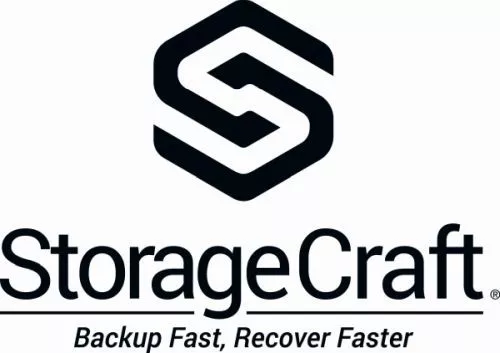Ransomware is on the rise everywhere around the world, and as warnings abound from security experts, we take a look at how ransomware works, but most of all why it (still) works and how come, after many years of technological advancements in the backup & disaster recovery industry, this threat is still very much real and produces damage measurable in dollars to businesses. New developments in ransomware techniques and codes make data protection planning all the more important for IT professionals, who are well aware that having an offsite backup (or two) can potentially save your business's life.
From simple desktop users to the health industry and educational institutions, it seems every other week we get news of another ransomware disaster: the University of Calgary in Canada just paid the hackers the equivalent of 20,000 Canadian dollars in Bitcoin to get back access to its systems and network.
This is just the tip of the iceberg when it comes to ransomware attacks - we know that the University of Calgary demonstrated Canadian-like courtesy by releasing news of the attack and the ransom amount “in an effort to be transparent,” says the Calgary Herald, who first reported the news. Most of these attacks are often not reported for reputation or further security concerns.Federal Bureau of Investigations (FBI) noted that in 2016’s first quarter, more than 200 million dollars was paid in ransomware attacks. According to the FBI, there were more than 2,400 reported ransomware attacks in 2015 totaling more than $24 million, with ransoms paid during the first quarter of 2016 surpassing $200 million. 



Ransomware New Developments: How Hackers Keep Getting Better
So how does an organization find itself in the situation of having files encrypted due to a ransomware attack? Just being aware of security risks when using a shady website or clicking a suspicious link is not enough anymore, as hackers keep evolving their methods in attacks. The bad guys are relying on the fact that users are vulnerable and don't have knowledge of their techniques, but also that IT administrators don't often use an offsite backup for their system. 1. Ransomware Email Attachments In JavaScriptAntivirus software firm ESET has detected a new type of threat at the end of May, when it has shown that email attachments written in Javascript code could download different variants of malware to user’s computers (such as the Locky virus), if the email attachment is clicked. Most malware programs for Windows are written in compiled programming languages like C or C++, and usually get the extension .exe and .dll - lo and behold, using an interpretative language such as Javascript is now part of hacker’s arsenal. 2. Unpatched Systems Are ExploitedMcAfee warned in its June Threat Report that ransomware attacks have risen 24% this quarter. One fact to highlight is that it doesn’t take a rocket scientist to conduct a ransomware attack: “relatively unskilled cybercriminals can use exploit kits to deploy the malware,” shows the report. Patching up and installing updates for operating systems and applications (be it desktop or mobile) is paramount for data protection and ransomware prevention. Software which is no longer supported by its manufacturer is a huge risk, as hackers will exploit any vulnerabilities.You can read more about how to prevent ransomware and discourage data kidnappers here.Why You Need A Windows Offsite Backup File
Cyberattacks can happen even if you haven’t clicked that weird link from the Nigerian prince in your spam folder, and even if you have Windows File History backup system turned on. This is why keeping an offsite Windows backup file using server or desktop backup software is crucial for business continuity. How do the bad guys get hold of your systems? •Ransomware viruses can infect legitimate websites and download themselves on user’s computers (in March, a Trend Micro report showed how big sites such as msn.com, nytimes.com, aol.com, realtor.com or newsweek.com were victims of attacks that attempted to download cryptolocker ransomware and malware on user’s computers); •Some ransomware types will also encrypt or delete the backup versions of your Windows Files, warns Microsoft, in its guide on ransomware (so having a Windows Backup is simply not enough); To add insult to injury, implementing strict IT policies for data security often doesn’t work as well for large organizations, who are constantly having to deal with new employees coming in (lack of training), or existing employees who are not particularly tech-savvy. Working out IT policies and getting everyone to respect them is a daunting task. The lack of enough staff with IT expertise is sometimes a challenge, especially in the public sector, and not all IT specialists understand the value of an offsite backup.
On The Frontline Of Ransomware Wars: Become a StorageCraft Partner
To keep data safe and protected from ransomware attacks, StorageCraft offers the best-in-market solution for offsite backup software in Windows, Linux and mixed-IT environments. This way, you can restore your system from the most recent backup image without paying the ransom money and without a lot of downtime. Taking frequent offsite backups of all your critical systems means that you will have a recent point-in-time recovery and avoid long downtime windows in case you need to restore. You can help business owners protect their data or become a partner and promote our award-winning data recovery solution.You can read up on the StorageCraft solution in the numerous case studies we have published about our partners battling ransomware attacks for their customers: •How CPI Solutions Saved 10 Customers Ransom Money And Downtime; •ETC TechSolutions Prevents Cryptowall with StorageCraft; •Exceed Consulting and Intellicomp Prevent CryptoLocker With ShadowProtect; You can also watch our FREE Alliance Partner ESET Webinar on the latest ransomware prevention and recovery trends. Michael Aguilar, Business Product Technical Lead for North America, is presenting best practices on avoiding and dealing with ransonmware.Want to be on the frontline of the ransomware wars? Fill in the form to become a StorageCraft Partner.
You May Also Like
- Uncategorized
5 Steps to Building an Effective Ransomware-Free Data Protection Strategy
July 5th, 2021 - Business Continuity Uncategorized
Arcserve & StorageCraft: The New Business Continuity Leader
February 24th, 2021